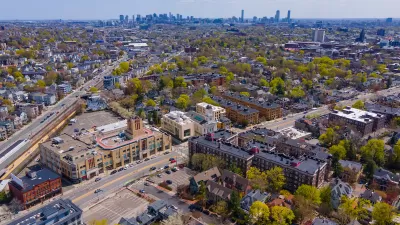The McKinsey Global Institute wants to help California build 3.5 million homes by 2025.

"California will have to build about 3.5 million homes over the next eight years, more than triple its current pace of construction, simply to keep up with expected population growth and hold down housing costs to affordable levels," begins an article by Conor Dougherty and Karl Russell.
That premise introduces the policy recommendations contained in a new report from the McKinsey Global Institute. The "Closing California's housing gap" provides a toolbox to help the state increase housing production in an era of scarcity, constrained by various levels of local controls. "Those ideas include streamlining grants of local permits, and using tax policy to withhold money from anti-growth cities that drag their feet on new housing," according to Dougherty and Russell.
The headlining policy idea, however, is to build on the vacant plots of land in the state's urban areas. The article includes maps of the Los Angeles region and the city of San Francisco, showing the broad swaths of land available to build "225,000 or so homes and apartments."
An article on the McKinsey Global Institute website has more on the methodology and findings of the study:
To understand the nature of the problem, we built a quantitative model to identify California’s housing affordability gap by household and location. To do this, we segmented the state’s more than 12 million households into 34 housing markets and 16 income bands, and assessed each household’s ability to afford housing in their local market. We learned that 50 percent of California’s households cannot afford the cost of housing in their local market. Virtually none of California’s low-income and very-low-income households can afford the local cost of housing.
FULL STORY: No Vacancies in California? Housing Report Begs to Differ

Planetizen Federal Action Tracker
A weekly monitor of how Trump’s orders and actions are impacting planners and planning in America.

Map: Where Senate Republicans Want to Sell Your Public Lands
For public land advocates, the Senate Republicans’ proposal to sell millions of acres of public land in the West is “the biggest fight of their careers.”

Restaurant Patios Were a Pandemic Win — Why Were They so Hard to Keep?
Social distancing requirements and changes in travel patterns prompted cities to pilot new uses for street and sidewalk space. Then it got complicated.

Albuquerque Route 66 Motels Become Affordable Housing
A $4 million city fund is incentivizing developers to breathe new life into derelict midcentury motels.

DC Area County Eliminates Bus Fares
Montgomery County joins a growing trend of making transit free.

Platform Pilsner: Vancouver Transit Agency Releases... a Beer?
TransLink will receive a portion of every sale of the four-pack.
Urban Design for Planners 1: Software Tools
This six-course series explores essential urban design concepts using open source software and equips planners with the tools they need to participate fully in the urban design process.
Planning for Universal Design
Learn the tools for implementing Universal Design in planning regulations.
Heyer Gruel & Associates PA
JM Goldson LLC
Custer County Colorado
City of Camden Redevelopment Agency
City of Astoria
Transportation Research & Education Center (TREC) at Portland State University
Camden Redevelopment Agency
City of Claremont
Municipality of Princeton (NJ)





























